#frogner
Explore tagged Tumblr posts
Text
Have you tried our Chicken Tikka Pizza? - Check Our Menu
#bestseller#chickentikka#pizza#frogner#lipsmacking#delicious#oslove#oslonam#food#pizzalove#oslo#chaskka#fusion#indisk#indian#flavors#flavoursofindia#savour#food photography#chaskka oslo
1 note
·
View note
Text

Christmas Prince Frog
⬇️ ⬇️ LINK ⬇️ ⬇️
#frog#frogs#frogdog#froggy#frogman#frogsofinstagram#froggtoggs#froglegs#frogfishing#frogner#frogprince#frogpose#frogtown#frogger#froglife#frogfish#frogskins#froggie#froglove#frognerparken#froglover
1 note
·
View note
Text


Norway, Winter, December 2018
Frogner Park, Oslo
8 notes
·
View notes
Text
"Peer Gynt" (2019) - Erik Ulfsby
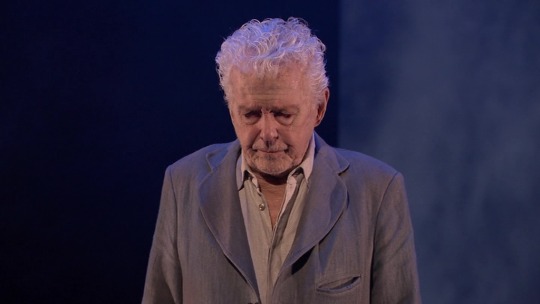
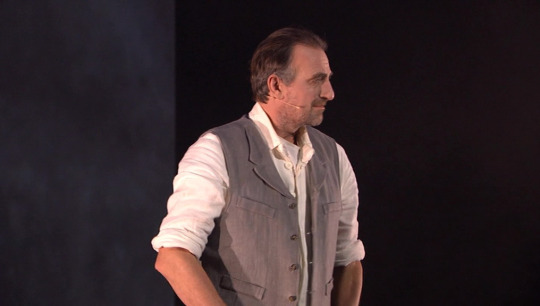
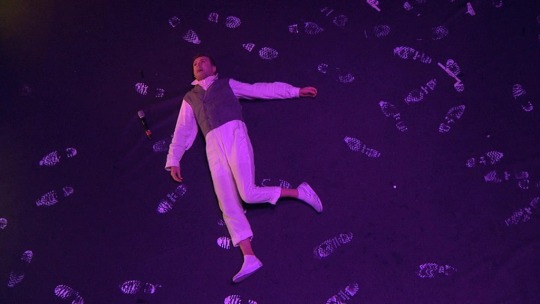


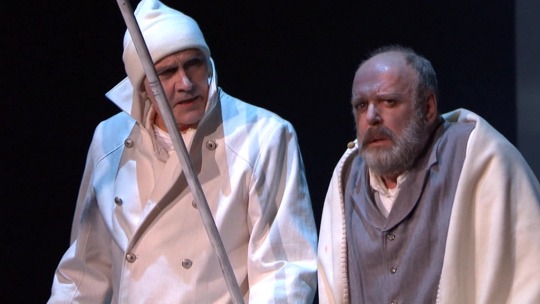
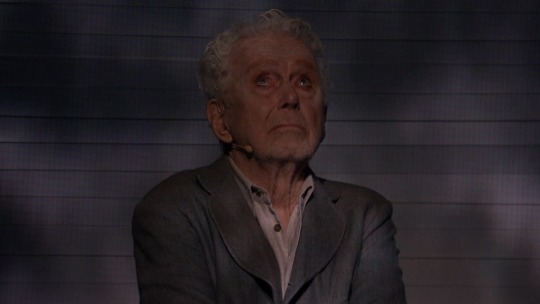
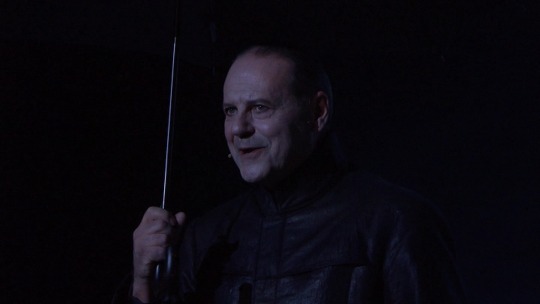




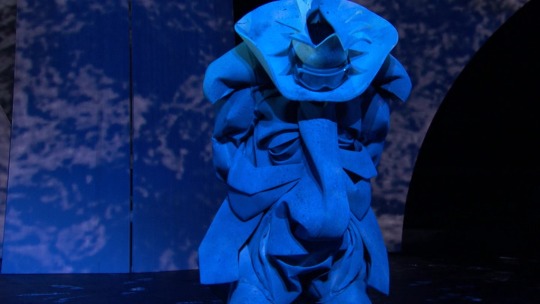


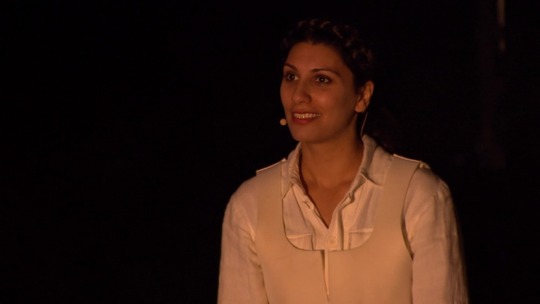





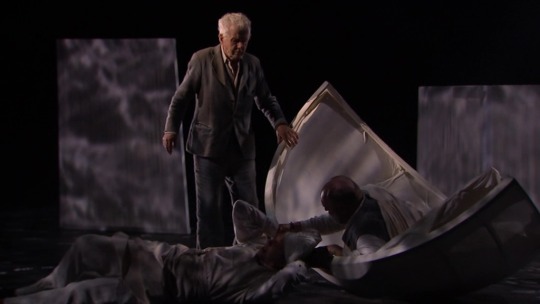



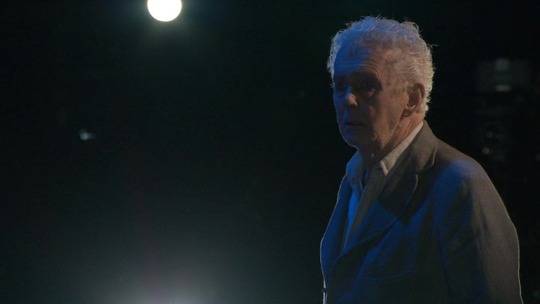

Films I've watched in 2023 (42/119)
A remarkable production in more ways than one.
Toralv Maurstad has for more than half a century, in Norway, been synonymous with the role of Peer Gynt. In this version he plays Peer as an old man looking back on his life, while seven other actors play Peer at various stages of life.
Ever present on stage, old Peer (Maurstad) and the Button Moulder (Svein Tindberg) observe as scenes from Peer's life are played out.
The costumes are interesting. While they're mostly white/grey, by the use of projected images and very carefully hit marks/positions on stage, several scenes start out with the characters seemingly in colourful, elaborate costumes.
Maurstad had suffered a stroke just a few years prior, so seeing him back on stage as Peer, at the age of 92, was extra special.
Thankfully it was recognised how important this production was as a piece of Norwegian theatre history, it was filmed and has been released on DVD by Naxos. I highly recommend getting and seeing it!
#films watched in 2023#Peer Gynt#Toralv Maurstad#Paul-Ottar Haga#Geir Kvarme#Svein Tindberg#Paul Åge Johannessen#Jan Grønli#Charlotte Frogner#Karl-Vidar Lende#Ingrid Jørgensen Dragland#Pål Christian Eggen#Sara Khorami#Henrik Ibsen#Erik Stubø#Jon Fosse#Det Norske Teatret#Stein-Roger Bull#theatre#motionpicturelover's screencaps
5 notes
·
View notes
Text

“Man Attacked by Babies”
Gustav Vigeland Sculpture Park, Frogner Park Oslo

1 note
·
View note
Text
"Nothing Controversial" in Grave Error - My chat with Richard Syrett of Sauga960am @RichardSyrett @Sauga960am
https://www.westernstandard.news/opinion/stirling-nothing-controversial-in-grave-error-indigenous-psychologist/54783 I was happy to chat with Richard Syrett of Sauga96am about a recent article of mine that was published in the Western Standard. The article discussed an interview between Frances Widdowson and Indigenous psychologist Lloyd Hawkeye Robertson (scroll down for full interview).…

View On WordPress
#Andrew Woolford#Canadian Senate#debunking residential school denialism#genocide#National Centre for Truth and Reconciliation#Raymond Frogner#Richard Syrett#Sauga960am#Sean Carleton#Senator Lynn Beyak#Truth and Reconciliation#truthandreconciliation#University of Manitoba
0 notes
Text



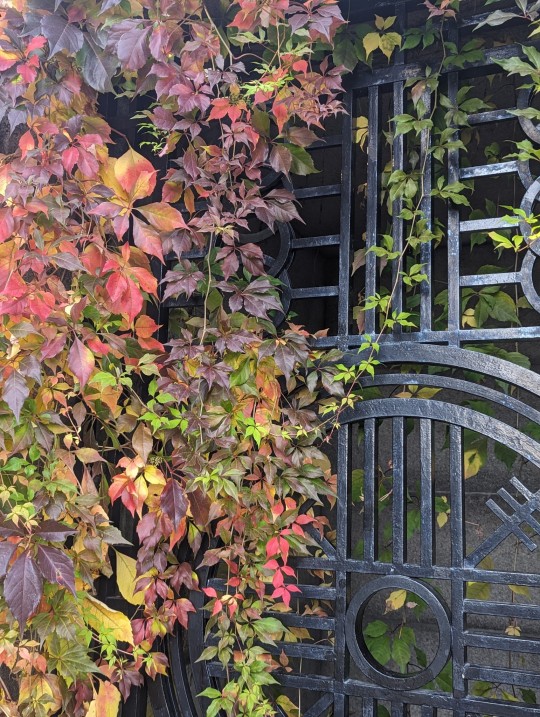

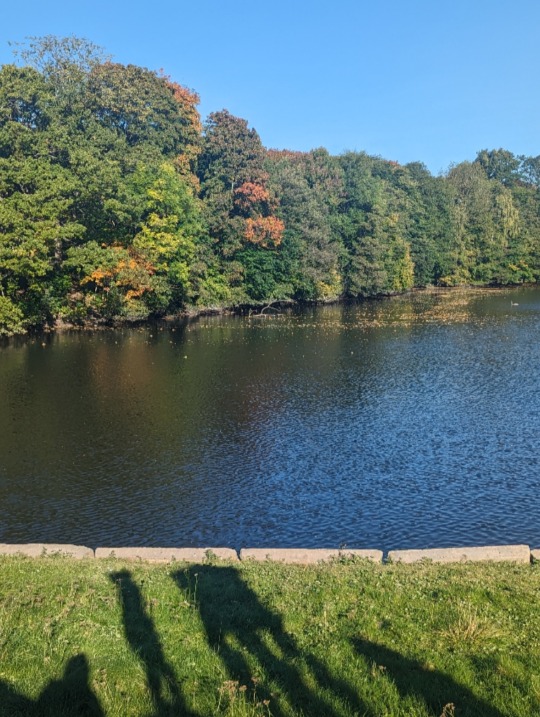
The start of Autumn. Frogner Park, Oslo, Norway. October 2023.
0 notes
Text
#fuck them kids


Gustav Vigeland (1869–1943)
Frogner Park, Oslo, July 2024
6 notes
·
View notes
Text
TW: sexual assault
Marius Borg Hoiby was arrested on suspicion of rape at 11:12 pm on Monday night. The charges concern sexual intercourse with someone who is unconscious or for other reasons unable to resist the act", a police statement says.
The police searched and seized Marius Borg Høiby's residence at the Skaugum estate at the same time as the arrest yesterday. Høiby was arrested by the police in a car together with the victim from the Frogner incident.
This woman is not among the previous victims. The charge stems from a relationship in Oslo. The police state that they created a report on the basis of information that has come to light during the ongoing investigation. The police started an investigation into the incident on 6 November 2024.
In total, there are now five victims, four women and one man, in the cases where Høiby is charged.
The legal counsel for the new offended woman tells NRK that the client has been questioned: “She is having a hard time, and it is heavy. It was not she who reported the relationship, it was the police who opened a case” says aid lawyer Hege Salomon to NRK.
Salomon states that the victim is a woman in her 20s: “She has not sought the public light. She did not know the accused or the other victims in this case prior to the incident described in the press release. And she wants to be protected”.
The part of the charge that concerns the victim from the Frogner incident on 4 August this year has now been expanded. Høiby is now also charged with another breach of a restraining order against the same victim, who was with Marius Borg Høiby when he was arrested on Monday. A report has also been filed for driving without a valid driver's license, the police say.
35 notes
·
View notes
Text

Indian Aalu Tikki Burger - Chaskka Oslo
#potet#potatoes#burger#indian#indisk#mat#sunn#delicious#chaskka#frogner#foodporn#oslonam#oslo#oslove#vegetar#vegetarian#lipsmacking#foodie#foodlover
1 note
·
View note
Text



Norway, Winter, December 2018
Frogner Park, Oslo
5 notes
·
View notes
Text
Police confirm: Charged with bodily harm
Mette-Marit's son was arrested by the police and thrown into solitary confinement after a serious incident of violence. A woman was hospitalized.
Marius Borg Høiby (27) is said to have been arrested by the police on the night of Sunday.
The reason is an incident in an apartment on Frogner in Oslo, where a woman in her 20s was present.
What happened in the apartment between the two is a bit unclear. But according to what Se og Hør learns, Mette-Marit's eldest son is said to have attacked her psychologically and physically.
The woman eventually managed to get Borg Høiby out of her apartment and called the police. The police secured technical evidence and conducted a brief interrogation of the woman.
The woman was then admitted to the hospital for investigation. She was discharged early Monday morning after being diagnosed with a concussion.
Borg Høiby was arrested at another address sometime after the incident. He was then taken to the Oslo police station, where, according to Se og Hør, he was put in solitary confinement. According to what Se og Hør learned, he was released on Monday afternoon after more than 30 hours in police custody.
As a matter of routine, a blood test was taken from Borg Høiby to find out if he was under the influence of [drugs or alcohol].
The incident is not listed in Oslo police logs.
The police confirmed to Se og Hør that they went to an address in Frogner on Sunday morning following a report of a violent incident that must have happened during the night.
"A person was arrested and charged with bodily harm and later released from custody."
Translation and editing for clarity by me of an excerpt from an article by Anders Johan Stavseng for Se og Hør, published on August 6, 2024, at 17:16 and updated at 17:47.
Note: Mette-Marit better be at Skaugum and giving him the telling off of his life
35 notes
·
View notes
Text

Vigeland Sculpture Park in Oslo, Norway.
Sculpture park in the Frogner Park with more than 200 sculptures by Gustav Vigeland (1869–1943) in bronze, granite and cast iron,
Oslo Norway
Photo credit :
DAVID NIKEL
7 notes
·
View notes
Text
Research seminar: Postmemory and the archaeology of the ghost.
My subject: The Witness Blanket (2019) by Carey Newman
(English translation from French)
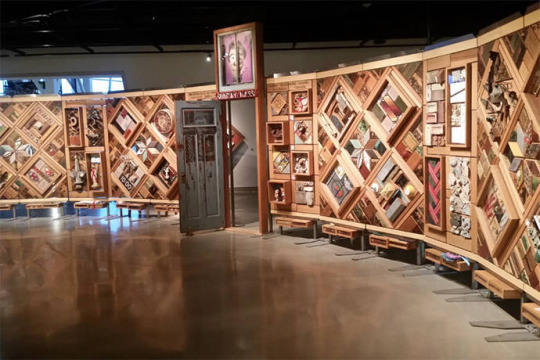
Carey Newman, The Witness Blanket, 2019, wood sculpture with inlay of various objects, Human Rights Museum, Winnipeg, Canada, 3.23 m x 11.96 m.
During the research seminar on postmemory and the archaeology of the ghost, I chose to work on Carey Newman's The Witness Blanket (2019). Newman's father is indigenous to the Hayalthkin'geme community. His father was separated from his family and sent to one of the rehabilitation residential schools that were located across Canada. He never told his children much about what happened to him or the violence he suffered.
I will present a short history of the residential schools, an analysis of part of Newman's work, and a conclusion. I will use testimonies from the artist's book, testimonies from other survivors, and articles about the children's living conditions.
To begin with, I need to outline the origins of schools for Aboriginal children. In 1876, Canada introduced the Indian Act. This law made it possible to control and discriminate against indigenous peoples. As Jacinthe Dion, Jennifer Hains, Amélie Ross, and Delphine Collin-Vézina explain, the Act was made up of several points: "measures linked to the colonization of Aboriginal peoples led to various traumas such as the loss of territory, confinement to reserves, drastic changes in lifestyles, the loss of traditional healing ceremonies and rituals, and the advent of residential schools to educate young people". The authors recount the period of operation of: "These institutions were set up by the Canadian government with the collaboration of religious institutions around 1880 and operated until the last school closed in 1996. According to Marie-Pierre Bousquet, Canada had: "Officially, there were one hundred and thirty-nine residential schools in Canada, at least recognized by the federal government for the purpose of paying compensation to former students […] In 1920, a new section of the Indian Act made schooling compulsory for Amerindian children aged 7 to 15". These boarding schools were camps set up to educate (according to the white colonizers) the indigenous people, or rather to destroy their identities and cultures.
The children separated from their families had to live in very harsh conditions in these institutions, leaving the after-effects described by Jean-François Roussel: "cultural and linguistic uprooting, serious damage to family ties, psychological, physical, sexual and spiritual violence". Many children died in these schools. There is no exact number, but Raymond Frogner and Dominique Fooisy-Geoffroy have drawn up a list of the victims:
"Around 150,000 children attended residential schools; More than 4,000 confirmed deaths; 400 unmarked burial sites; 32% of deaths where names were not recorded; 23% of deaths where sex was not recorded; 49% of deaths where the cause of death was not recorded; And, finally, several abandoned cemeteries". All this data was used by the Truth and Reconciliation Commission of Canada (2008 - 2015), to ensure that the government apologised to the victims of the residential schools (the survivors and the dead), to their families and communities, and also to compensate the victims. This act was recognised as cultural genocide, defined as "the destruction of structures and practices that enable groups to live together as groups".
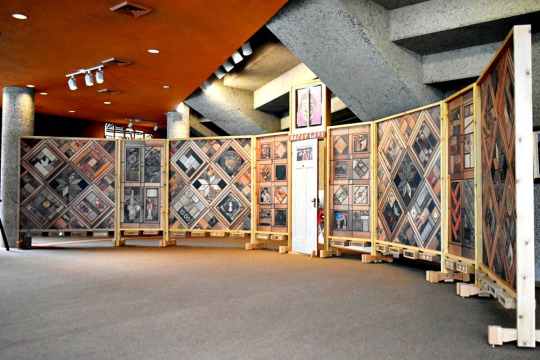
Carey Newman, The Witness Blanket, 2019, wood sculpture with inlay of various objects, Human Rights Museum, Winnipeg, Canada, 3.23 m x 11.96 m.
It is in this context of recognition of the crime committed by the Canadian government and the church, but also of reconciliation, that the artist Carey Newman has worked on his work: The Witness Blanket (2019) in partnership with the Canadian Museum for Human Rights. The work is a sculpture. It is made from objects such as bricks, pieces of wood, and a door. They are salvaged from the rubble of residential schools, but also from donations by survivors of these schools, such as photos, letters, and personal objects from that era. All these elements are mounted and organized like a patchwork quilt on eight wooden panels. The motifs can be found in the culture of certain indigenous peoples. In the center of the room is a wooden door, also from a boarding school. Above the door is a copy of the Indian Act. To create the motif, the artist placed the objects in the same way. I decided to concentrate on three objects.

Carey Newman, The Witness Blanket, 2019, wood sculpture with inlay of various objects, Human Rights Museum, Winnipeg, Canada, 3.23 m x 11.96 m, close-up of the bowl.
In the sculpture is a yellow bowl representing the eating disorders of the father passed on to his children. This transmission is defined as post-memory, a term explained by literature professor Maria Hirsch: "The non-verbal, non-cognitive acts of memory transfer that occur within families in terms of symptoms. The painful psychosocial conditions experienced by parents in the past […] that children hear, see and feel in the present. Memory is tangible. It is embodied". With Newman's father, it was the fear of going hungry: Even today, my father's experience of eating at boarding school affects me and my family. For example, because I was taught not to waste food, it's still difficult for me not to eat everything I'm served […] When I had my own child, I realized that I was instilling in him the same harmful eating habits". The reason for this trauma of going hungry is the conditions in which these children lived. In Newman's book, there are testimonies from survivors. One of them explains what the victims ate: "the pupils were given moldy bread and cold, watered-down soup". There is also the punishment suffered by the father, which was passed on: "In boarding schools, pupils were often forced to finish everything on their plates. That's also what happened in my house when I was a child. I was told that if I didn't eat my dinner, I'd be served the same thing for breakfast". This simple story about food is passed down from generation to generation. If the generation that is the victim of this violence cannot close this chapter in its history (close, not forget), it runs the risk of passing on the same violence to the next generation. This bowl represents a trauma bequeathed to the next generation.
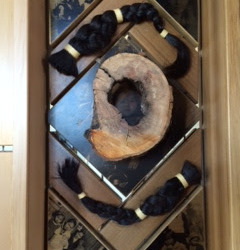
Carey Newman, The Witness Blanket, 2019, wood sculpture with inlay of various objects, Human Rights Museum, Winnipeg, Canada, 3.23 m x 11.96 m, close-up of the hairs.
In The Witness Blanket (2019), hair has been hung on one of the panels. This hair belongs to the artist's sisters. The reason for the presence of the girls' hair is to pay homage to their cultures. In indigenous culture, hair is very important. According to Newman, hair "represents strength and is only cut in times of mourning". Hair is an important element in indigenous culture. That's why, when children were sent to boarding schools, the heads of these institutions (priests and nuns) cut their hair with great violence. As writer and survivor, Bev Sellars explains: "Our hair was cut and we were 'deloused' with the pesticide DDT […] Although we held a towel over our face, some of the DDT fell out after we removed the towel, stinging our eyes and giving us a horrible taste". The aim was to humanize the children and create a racist stereotype of the dirty native.
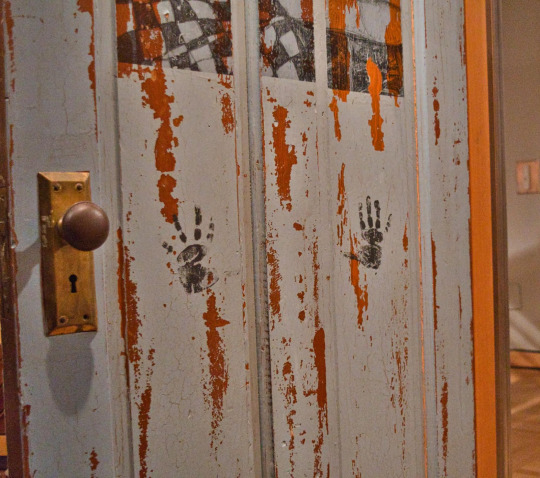
Carey Newman, The Witness Blanket, 2019, wood sculpture with inlay of various objects, Human Rights Museum, Winnipeg, Canada, 3.23 m x 11.96 m, close-up of the door.
The door at the centre of the sculpture is part of the rubble of an infirmary at St. Michael's boarding school. Carey Newman chose it first and foremost for its sombre history: "because of the abuses committed in the boys' infirmary at St. Michael's […]". Although the artist does not go into detail about what might have happened in the infirmary, we can quickly imagine what might have taken place. In 2018, the National Centre for Truth and Reconciliation conducted a survey: "One in two Canadians is unaware of the existence of residential schools". The door in Newman's work is not closed, to represent a past that must not be forgotten. There are two handprints on the door: they are the handprints of the artist's daughter.
It's a way of including several generations in the same project, and it's also a way for these families to share their common histories. As Sarah Henzi, a professor of indigenous literature, describes it: "The legacy of the historical burden of different systems of assimilation reminds us that anger, pain, shame and racism are passed on from one generation to the next". Newman's sculpture helps to shed light on a forgotten part of history, while at the same time addressing the psychological plight of the victims and their families.
Bibliography
Books:
NEWMAN C. & HUDSON K., The Witness Blanket: Truth, Art and Reconciliation, Victoria, Orca Book Publisher, 2022.
SELLARS B., They Called Me Number One: Secrets and Survival at an Indian Residential School, Vancouver, Talonbooks, 2013.
Journals articles:
BOUSQUET M-P., « La constitution de la mémoire des pensionnats indiens au Québec », Recherches amérindiennes au Québec, N°46, 2016, p. 165-176.
DION J., HAINS J., ROSS A. & COLLIN-VÉZINA, « Pensionnats autochtones : impact intergénérationnel », Enfance et famille autochtones, N°25, 2016, p. 1-25.
HENZI S., « La grande blessure. Legs du système des pensionnats dans l’écriture et le film autochtones au Québec », Recherches amérindiennes au Québec, N°46, 2016, p. 199-211.
NICOLAOU A., « Postmemory at work in Maria Anastssiou’s Notes: Remembered and Found », Einkofi, 2023, p. 1-6.
ROGNER R. & FOISY-GEOFFROY D., « Qui sont ces enfants perdus ? Origine et conception du registre des noms des enfants autochtones décédés dans le système des pensionnats du Canada, selon le Centre national pour la vérité et conciliation », Archives, N°48, 2019, p. 149-159.
ROUSSEL J-F., « La Commission de vérité et réconciliation du Canada sur les pensionnats autochtones », Théologiques, N°23, 2015, p.31-58.
Podcast:
FONTAINE F., 21 décembre 2018, La reconnaissance du génocide culturel au Canada, [ émission de radio ], radiofrance, consulté le 04 avril 2023 à l’adresse suivante : https://www.radiofrance.fr/franceculture/la-reconnaissance-du-genocide-culturel-au-canada-8280696
#artwork#literature#indigenous#indigineous people#art critique#college#art university#dissertation#french
3 notes
·
View notes
Text
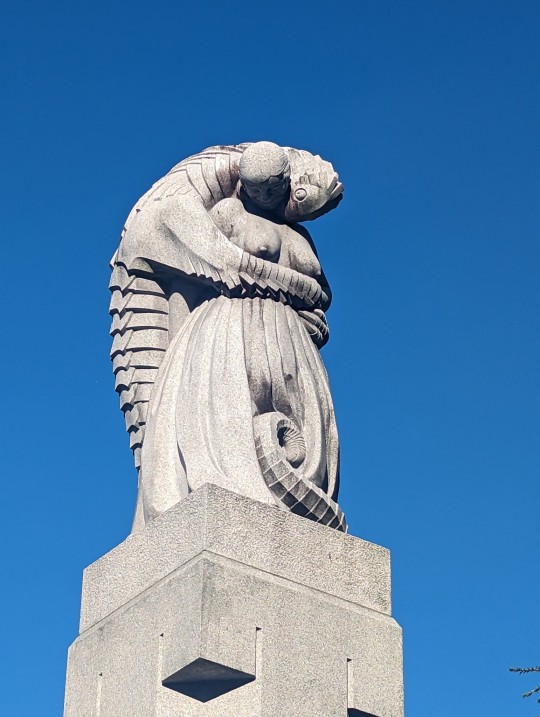
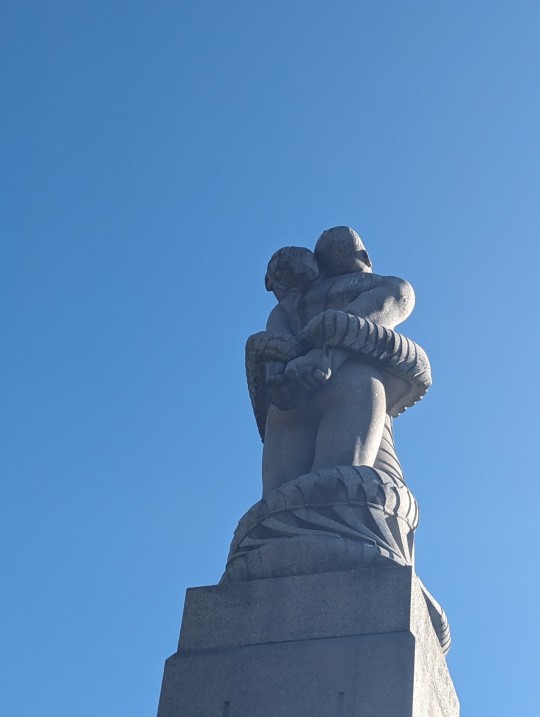
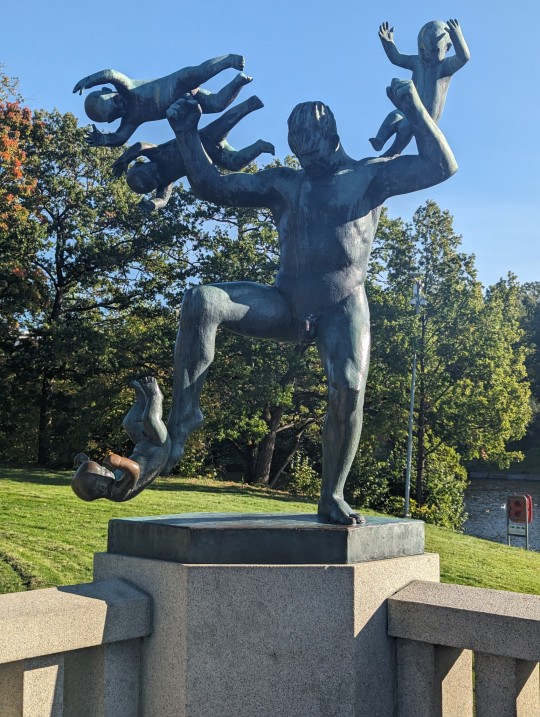
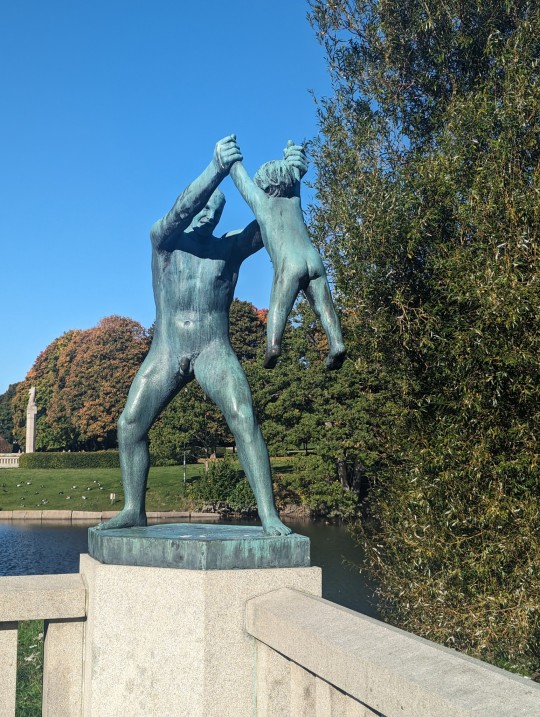
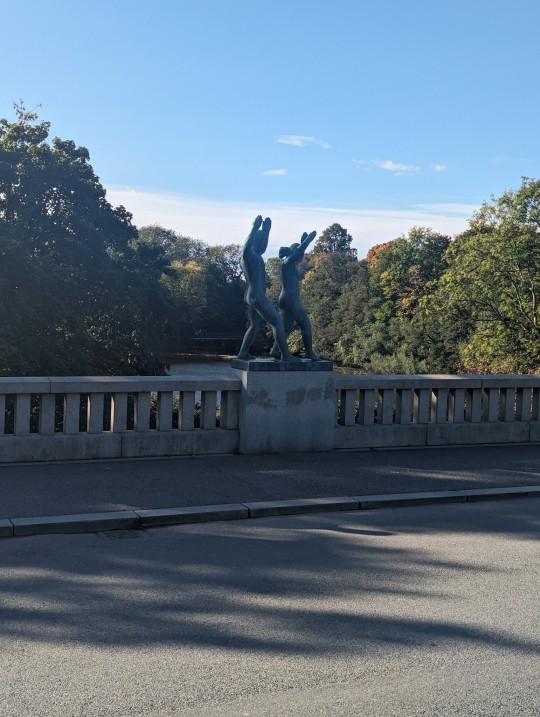
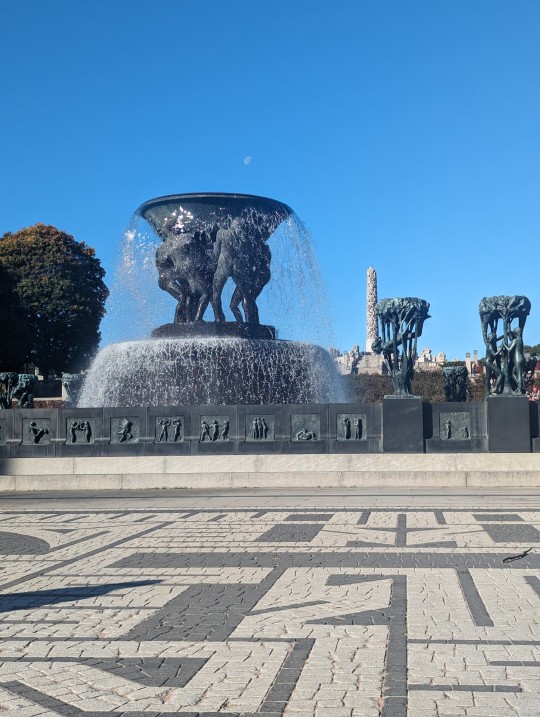

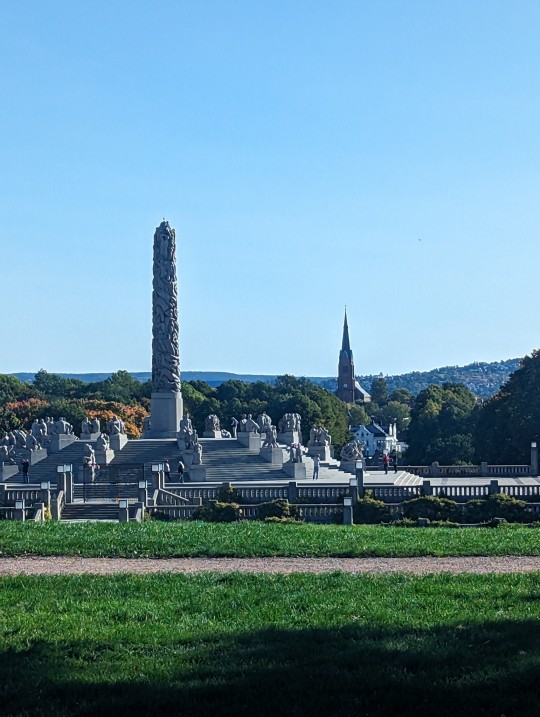
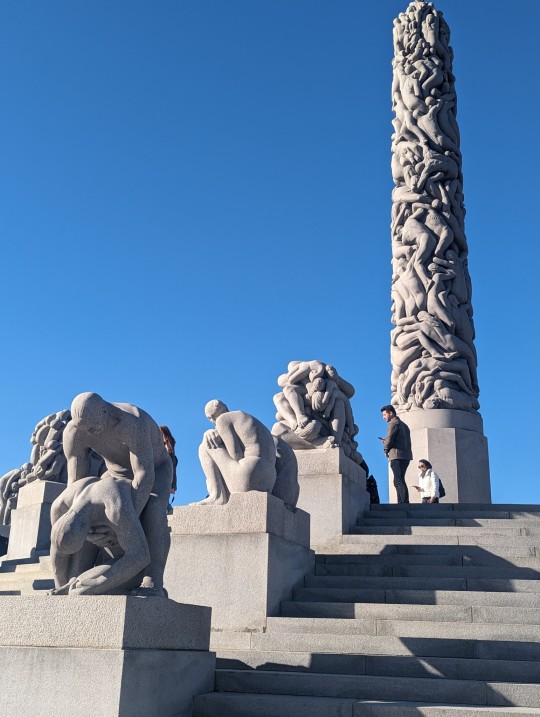

Vigeland Sculpture Park, Oslo, Norway. October 2023.
1 note
·
View note
